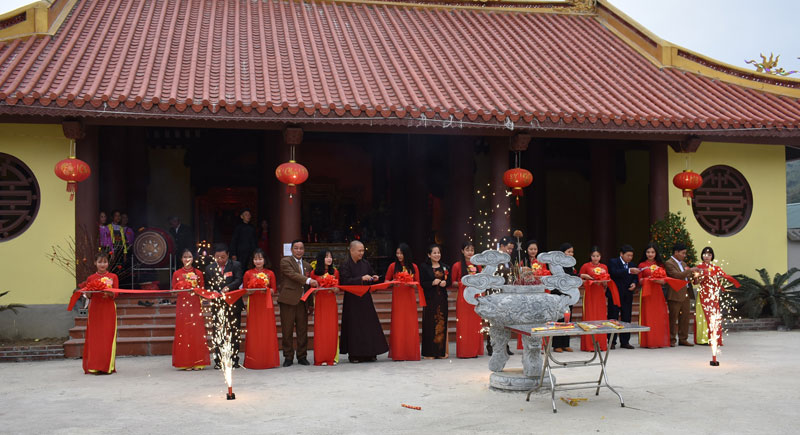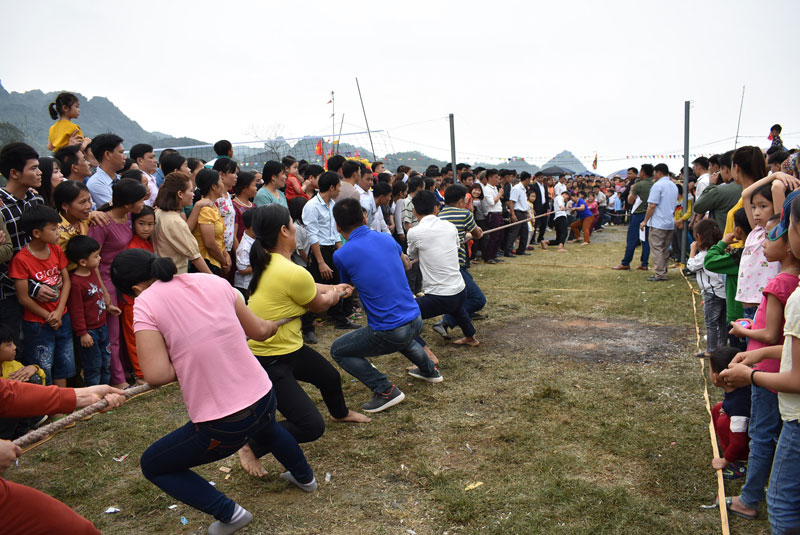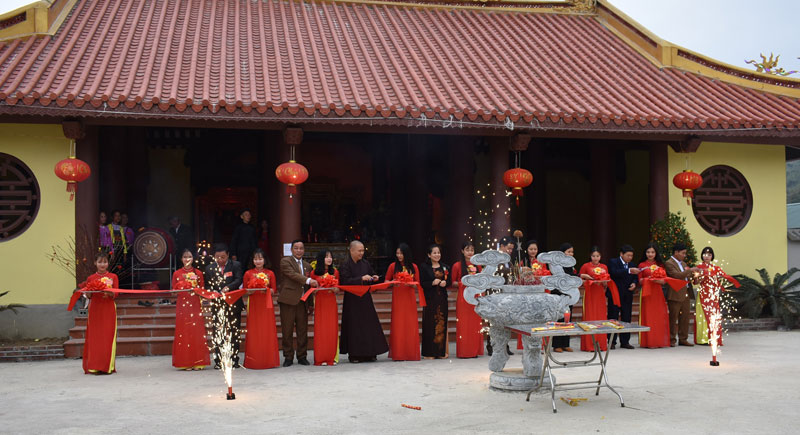
(HBO) – The People’s Committee of Cao Duong commune, Luong Son district has held a ceremony to inaugurate the first phase of Quen Thi communal house.
The ribbon cutting ceremony to inaugurate Quen
Thi communal house in Cao Duong commune, Luong Son district.
The communal house had long been built in the
field of Quen Thi village, serving as a place where religious activities took
place to show reverence to ancestors, gods and village founders.
In 1951, French colonialists attacked the
village, killed locals for robbery and burned the communal house. By 1996,
locals voluntarily contributed their money and efforts to rebuild the communal
house at its old campus. However, through time, the communal house degraded
seriously. Thanks to the support of departments and sectors in the province and
district, Most Venerable Thich Dao Thinh from Khai Nguyen pagoda encouraged
Buddhist monks, nuns and sponsors to contribute money to rebuild the communal
house. As a result, people in the village and commune provided 40 million VND and
working days while 39 households donated land to expand its campus area to over
13,000 square metres. The first phase of the project has been completed with
main facilities while the second one is being carried out through capital
contributed by organisations and individuals.

People are
playing tug of war at the Quen Thi communal house festival.
On the occasion, the communal People’s Committee
held art programmes, boat racing, stick pushing and volleyball tournaments./.
Located just a 20-minute drive from Hoa Binh City, Ora Hill Farmstay & Glamping Hoa Binh is a captivating new destination nestled in Mo hamlet, Bình Thanh commune, Cao Phong district. Combining farming with leisure, this tranquil retreat is perfect for those seeking balance, joy, and an immersive experience in the expansive beauty of nature.
Muong Bi - Tan Lac is renowned as one of the four famous Muong regions in Hoa Binh province. Blessed by nature with a favourable climate and stunning landscapes, Tan Lac holds great advantages for tourism development. The local tourism industry has made remarkable strides in recent times thanks to the attention and support from the local authorities and sectors.
With its strategic location, well-developed transport network, and diverse soil and climatic conditions, Hoa Binh is emerging as a must-visit destination in Vietnam's northwestern tourism corridor. The province boasts numerous attractions, including the Kim Boi hot springs (Kim Boi district), the Dau Rong cave complex (Cao Phong), the Mai Chau valley (Mai Chau), and the iconic Hoa Binh hydropower plant.
The northern mountainous province of Hoa Binh has been listed among the 71 most beautiful places to visit worldwide by the prestigious US travel magazine Condé Nast Traveller.
Hoa Binh province’s rich natural and cultural resources position it as a prime location for developing community-based tourism (CBT). In recent years, support from central and provincial policies, as well as assistance from non-governmental organisations, have encouraged local ethnic minority and mountainous communities to actively engage in the sector.




